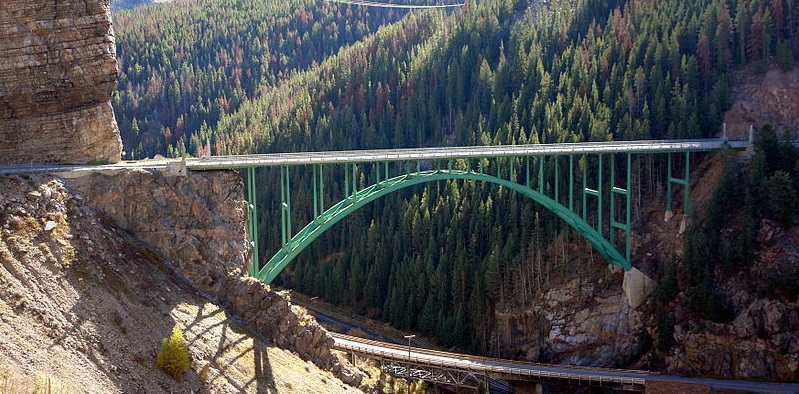Red Cliff Bridge has had some reconstruction work done, but can you take your safety for granted when you cross other bridges in Colorado? 521 bridges in our state are reportedly in poor condition.
You’ll cross that bridge when you come to it. The problem is, if you’re on the road with any regularity, you may already be crossing bridges in Colorado and elsewhere that aren’t in very great shape.
About 6 percent of Colorado’s 8,624 bridges, or 521 bridges, have key features considered to be in poor condition, according to The American Road & Transportation Builders Association. The engineering term describing these bridges is “structurally deficient.” Defective elements include deteriorated decks, superstructures, and/or substructures.
Moreover, nearly 10 percent, or 851, of Colorado’s bridges are considered to be “functionally obsolete,” which means that they fall short of modern design standards.
How Does Colorado Compare to Other States in the Union?
It could be worse. Colorado’s statistics put the state in the middle of the road. Of the 50 states, it is ranked 38th with respect to percentage of structurally deficient bridges, 30th with respect to the absolute number of deficient bridges.
Higher numbers are better in the ranking. Having a lower-number rank means having a relatively high percentage of bridges in the state that are in trouble. Thus, Colorado’s higher absolute number of 521 bad bridges gives it a lower ranking, 38th, than Wyoming’s 36th for its absolute number of 370 bad bridges. But because Wyoming’s percentage of structurally deficient bridges (12% for 370 out of 3,085 bridges) is double Colorado’s 6%, Wyoming gets the lower ranking of 14th to Colorado’s ranking of 38th. Percentagewise, Colorado is doing substantially better than its neighbor.
In other words, you don’t want to be Number One in the percentage category. You don’t want to be Rhode Island, ranked 45th when it comes to absolute number of bad bridges—middling—but ranked number 1 for its percentage of structurally-deficient bridges: 178 out of 766 bridges, or 23%.
Federal Government and State Drivers Help Pay for Repairs
Between 2005 and 2014, Colorado received more than $1 billion from the federal government for capital improvements on nearly 500 bridge projects. Between 2004 and 2015, the state built 608 new bridges and did major reconstruction on 91 more.
When they register their vehicles, Coloradans pay a bridge-safety surcharge that ranges from $13 to $32, based on the weight of their vehicle. The surcharge generates about $100 million annually for bridge repair and replacement.
You can learn more about the state’s ongoing bridge repair program at the state government’s Colorado Bridge Enterprise web page.
Bridges Have Collapsed Before
Unfortunately, poor road conditions can cause auto accidents, and neither Colorado nor other states are strangers to bridge-failure tragedies.
In the early morning of October 4, 1985, the I-25 Walnut Street viaduct under construction in Denver collapsed, killing a construction worker and injuring four. On May 15, 2004, a 40-ton steel support girder on an overpass west of Denver collapsed onto Interstate 70, killing three people.
But one of the deadliest bridge failures in American history also occurred in recent years, during the evening rush hour on August 1, 2007, in Minneapolis when the I-35W Mississippi River bridge—an eight-lane, steel-truss arch bridge—suddenly collapsed, killing 13 people and injuring 145.
Top 5 Most-Traveled Bad Bridges in Colorado
Using National Highway Traffic Safety Administration data, the Builders Association has identified the structurally-deficient bridges in Colorado that were the most frequently used in 2015. Here are the top five in order of most to least average daily crossings:
- Denver. I-70 ML over Havana Street, Union Pacific railway in Denver; built in 1964, it has 191,000 daily crossings.
- Denver. US-6 ML over BNSF Railway on the eastern edge of I-25. Built in 1956, 142,000 daily crossings.
- Denver. US-6 ML over South Platte River at the western side of I-25. Built in 1956, 142,000 daily crossings.
- Denver. US-6 ML over Bryant Street. Built in 1958, it has 135,000 daily crossings.
- Lakewood, Jefferson County. US-6 ML over SH-121 ML. Built in 1972, it has 112,000 daily crossings.
Visit the Association’s Colorado Highlights page for the complete list and other information about the condition of Colorado’s bridges.

